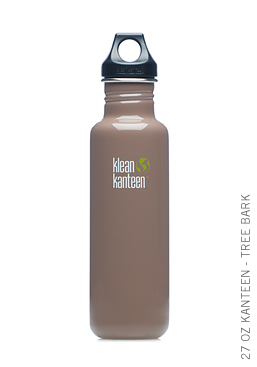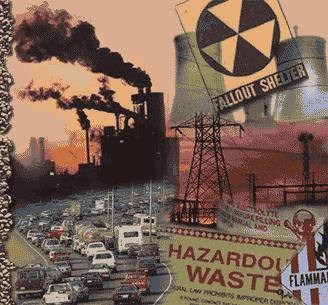What will architects think of next?
Savannah, Georgia architect Ming Tang came up with the idea of “folded bamboo and paper” shelters after the 7.9 earthquake that struck China in May. The quake killed tens of thousands, injured hundreds of thousands and left millions of people homeless. Which meant the Chinese government needed to find 1.5 million temporary homes.
Enter Tang, who wanted to development a”temporary shelter for the homeless people, a kinetic structure htat exhibits characteristics of umbrella and folded fans, the potential of arranging themselves into various contexts and dwelling requirements.”

If you’re wondering about covering the “roofs” of the shelters (that bamboo frame doesn’t look as if it would keep the elements our), the shelters are to be covered by using “post and pre-consumer recycled paper.”
The shelters are easy to product, relatively inexpensive and environmentally friendly.
Tang designed the shelters for a contest sponsored by San Francisco’s Urban Re:Vision.
There’s no word on whether China has asked for a shipment….
We find them beautiful. They also look like daddy long leg spiders, friendly little fellows (they eat insects) that are quite common here in Southern California.
Which brings us to The Walking House, created by N55, Danish artists and activists.
The idea is that, should the homeowner wishes to move, no need to move into a different house. Instead, move the house to a different spot.
The Walking House requires no permanent use of land and thereby challenges ownership of land and suggests that all
land should be accessible for all persons.
Interesting thought. But we have one question. Does The Walking House come with The Walking Fence, so that we may keep our neighbor’s dog from using our – temporary – front lawn as a toilet?
How Green is Your Toner?
Yes, yes, yes! We all know that a good step in creating a greener office environment is to cut back on the amount of the paper we use and throw away.
But your toner also contributes to your carbon footprint, because toner powder is derived from oil. And producing oil and using oil places carbon into our atmosphere, thus contributing to greenhouse gases and the rise of global temperatures.
But Soyprint.net believes it has a solution for the office that wishes to go greener: Soy-based toner.
From the company’s website:
Industry leaders report it takes about 2 liters of oil to make the one pound of toner powder required for each oil-based
cartridge. Currently, U.S. businesses, institutions and governmental bodies consume more than 100 million cartridges per
year. That equates to 100 million pounds or 50,000 tons of material we currently use petroleum to produce. Now every
office has a choice – they can print black or they can print “green."
They have a nifty tagline, too: "Everyone prints black...Now we can print "Green."
[ add comment ] ( 359 views ) | [ 0 trackbacks ] | permalink |




 ( 3 / 843 )
( 3 / 843 ) We've all become accustomed to the beloved tradition of office water cooler stations. You know the drill: you push the spout, the jug goes "glug," and the water comes out. However, this system has two very obvious drawbacks, in terms of the environment as well as your health. First of all, the liquid is contained within a plastic device that can possibly leak BPA into your drinking water. And second of all, the water cooler system necessitates that millions of little paper cups must be used and disposed of in landfills each year.
While we clearly need an alternative to this system, the answer does not lie in personalized bottled water for each employee, as this still contributes to water contamination and waste. (Case in point: Only 23% of the plastic water bottles used in America are recycled each year, which means that 38 billion end up in landfills.) Therefore, we present to you a better option: Klean Kanteens.

These reusable containers are made of 100% stainless steel, contain no BPA, and are conveniently dishwasher friendly. Some people prefer to use Sigg, another popular brand, but we prefer the delightful minimalism of the Klean Kanteen bottles.
As far as the nitty gritty details, a 27 oz. Klean Kanteen bottle is $19.95, and shipping is $11.00, making your total around $31. While you may initially balk at the price, paying $31 is definitely preferable to continuing to buy bottled water or utilizing a water cooler for the rest of your life. So, we propose this solution to the water and health dilemmas, and encourage you to explore your stainless steel water bottle options further.
[ add comment ] ( 58 views ) | [ 0 trackbacks ] | permalink |




 ( 3 / 848 )
( 3 / 848 ) 
You've been cooped up in your office all day long. Even though you've stocked your workspace with the most eco-friendly furniture possible and purchased reusable, recycled supplies, you still feel out of touch with the natural world. You decide to eat your lunch outside today, in order to feel a little better about your eco-standing.
However, as soon as you step outside your office doors, you are met with a chokingly-thick cloud of particle-filled smoke. That's right - the smoky haze traditionally covering coal-rich areas like China and Japan is now making its way over to the U.S., and environmentalists are suing the Environmental Protection Agency for failing to prevent it.
According to Earthjustice attorney Jennifer Chavez, the EPA has not met deadlines set by the Clean Air Act for controlling smoke and air pollution. The haze is now threatening the beauty of large national parks such as the Grand Canyon, Yellowstone, and the Great Smoky Mountain areas.
The lawsuit was just filed today, so EPA spokesman Nicholas Butterfield was not yet able to comment on its contents. It remains to be seen how the organization will deal with the charges, but part of the plan will be to establish environmental mandates for each state. State governments will be required to submit a plan detailing how they are dealing with the pollution problem, and what they plan to do to stop it.
Hopefully all of this drama will eventually lead to cleaner air for all of us.
[ 1 comment ] ( 91 views ) | [ 0 trackbacks ] | permalink |




 ( 3 / 858 )
( 3 / 858 ) 
Umaru Musa Yar'Adua, president of Nigeria, announced in a speech today that the country's annual losses stemming from environmental degradation total nearly $5.1 billion. This loss can be attributed to the constant exploitation of Nigeria's goods, as well as the increased urbanization of the formerly natural land spaces. The above picture of Lagos, the former capital of Nigeria, serves to demonstrate the effects these factors can have on the environment.
Yar'Adua spoke at the National Environmental Summit in Abuja, saying that the state of the environment is having a disastrous effect on the citizens of Nigeria, both socially and economically.
"Increased incidences of flooding across the country constitute clear evidence of stress and ecological imbalance in the environment of many of our community’s today,” said Yar'Adua. "Our key environmental challenge is to combat land degradation, deforestation and devastation, drought and desertification, loss of biodiversity, flooding, erosion, urban decay and municipal waste disposal and the adverse effect of climate change."
This news should be a warning to the U.S. that our economy will not be able to thrive unless we begin to invest in more sustainable systems of energy. Without these key ingredients, our business and corporate sectors are likely to collapse under the immense financial pressure of supporting fossil fuels. It only goes to show that our office life is directly effected by the environment, and vice versa.
[ add comment ] ( 46 views ) | [ 0 trackbacks ] | permalink |




 ( 3 / 833 )
( 3 / 833 ) 
Many of you are familiar with Colin Beavan, the environmental activist from New York City who decided to try a No Impact experiment for one year. Basically, he gave up pretty much anything even remotely energy-sucking, including plastic, cars, toilet paper, and so on, and documented his journey in a well-known blog.
Colin got us thinking: is there such a thing as a No Impact office? You're probably thinking "Uh, don't think so. How are we supposed to work if we can't even, oh, GET TO WORK?!" But Colin's experiment wasn't just about eliminating negative impact, it was about increasing positive impact as well. According to the No Impact website, his theory is as follows:
Negative Impact + Positive Impact = Zero.
No net impact. Get it?
So it's not that a No Impact office would have to give everything up necessarily, it would just need to find ways to contribute to the environment in a positive way (build trees, host eco fundraisers, etc). Intriguing.
If you're wondering, the results of this experiment were measured with a device like a TerraPass, which is a gadget that computes carbon emissions. Pretty handy, huh?
What do you all think? Based on Colin's philosophy, could a No Impact office exist? We're waiting to cast our vote until after the No Impact book and movie come out, but we're betting it wouldn't be that hard. And we'd be the first to offer to furnish it!
[ add comment ] ( 49 views ) | [ 0 trackbacks ] | permalink |




 ( 3 / 898 )
( 3 / 898 ) 


 Looking for a Green Office Solution?
Looking for a Green Office Solution?